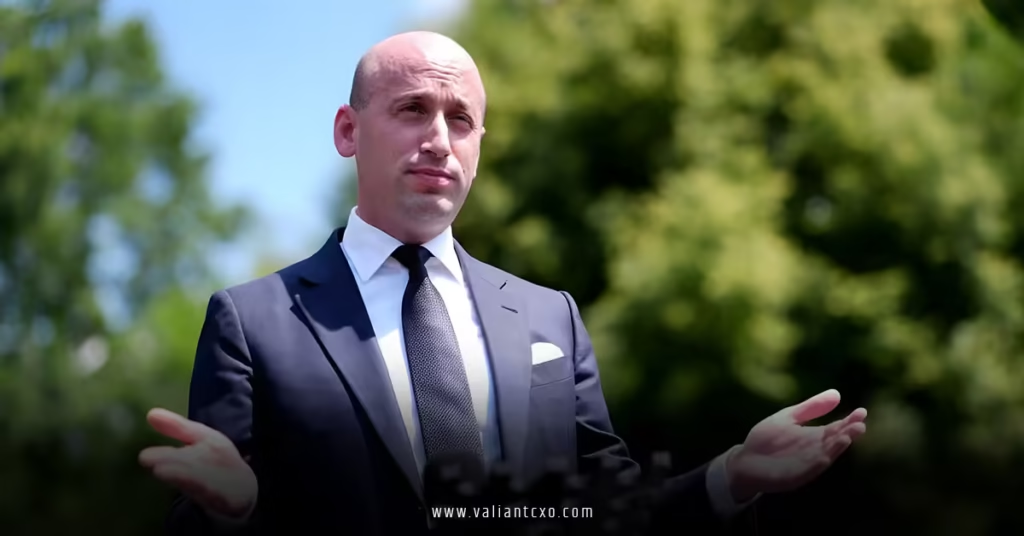What does plenary authority mean in Trump’s National Guard deployments 2025? Imagine you’re playing a high-stakes game of chess, and suddenly the rules let one player—the president—sweep the board clean without asking permission. That’s the vibe we’re getting right now in 2025, as President Donald Trump ramps up his use of federal troops in American cities. It’s not just another political move; it’s a bold flex of executive muscle that’s got governors fuming, courts buzzing, and everyday folks scratching their heads. As someone who’s followed these twists and turns, I can tell you it’s like watching a thunderstorm roll in over a quiet neighborhood—exciting, scary, and full of lightning strikes you didn’t see coming. In this piece, we’ll unpack the term “plenary authority,” dive into how it’s playing out in Trump’s strategy for deploying the National Guard, and explore why it’s sparking such fierce debates. Buckle up; by the end, you’ll feel like an insider in this constitutional showdown.
Understanding Plenary Authority: The Basics You Need to Know
Let’s start with the heart of the matter—what does plenary authority mean in Trump’s National Guard deployments 2025, anyway? At its core, plenary authority isn’t some fancy legal jargon cooked up in a smoky backroom; it’s a straightforward concept from Latin roots meaning “full” or “complete.” Think of it as the ultimate green light in U.S. law: a power so sweeping that it’s exercised without needing a nod from Congress, courts, or even state leaders. No checks, no balances—just pure, unfiltered decision-making on a specific issue.
In presidential terms, plenary authority pops up in areas like immigration enforcement or military command, where the commander-in-chief gets to call the shots with minimal interference. It’s like being the captain of a ship during a storm; you don’t poll the crew for every turn of the wheel. But here’s the kicker: while it sounds absolute, it’s not a blank check. The Constitution and statutes like Title 10 of the U.S. Code set the boundaries, even if they’re stretched thin. For Trump in 2025, this authority is his secret sauce for federalizing the National Guard—turning state-controlled troops into federal assets overnight. Why does this matter? Because it flips the script on how we handle domestic crises, from crime waves to protests, and it’s testing the very glue that holds our federal system together.
The Legal Roots: From Constitution to Modern Statutes
Dig a little deeper, and you’ll see plenary authority isn’t a Trump invention—it’s woven into the fabric of American governance. Article II of the Constitution hands the president the role of commander-in-chief, giving him broad sway over the military. Fast-forward to today, and laws like 10 U.S.C. § 12406 let the president call up National Guard units if he believes federal laws are being obstructed or a rebellion is brewing. That’s plenary in action: he decides, they deploy.
But don’t get too comfy with the idea of unlimited power. Courts have long reminded us that even plenary authority has guardrails. Remember the Posse Comitatus Act of 1878? It basically says, “Hey, Mr. President, you can’t use the military as your personal police force on U.S. soil without good reason.” Trump’s team argues his moves in 2025 skirt this by focusing on protecting federal property and officers, not direct law enforcement. It’s a fine line, like dancing on a tightrope over the Grand Canyon—one wrong step, and lawsuits come tumbling down. And tumble they have, with states like Oregon and Illinois crying foul in federal court.

Trump’s 2025 Strategy: Why the National Guard Is Getting Federalized
Now, let’s zoom in on the action. What does plenary authority mean in Trump’s National Guard deployments 2025? It’s the engine driving his aggressive push to send troops into Democratic strongholds like Portland, Chicago, and beyond. Since taking office again, Trump has framed these cities as battlegrounds against chaos—rising crime, unchecked protests, and what he calls a “migrant invasion.” His solution? Federalize the Guard under Title 10, bypassing governors who say, “Thanks, but no thanks.”
Take Portland: In late September 2025, Trump ordered 200 Oregon National Guard members to the streets for 60 days, citing protests around ICE facilities as a threat to federal operations. Then, he upped the ante by pulling in 300 California troops, despite Governor Gavin Newsom’s objections. It’s like borrowing your neighbor’s lawnmower without asking—and then using it to mow their entire yard. Chicago followed suit in early October, with 300 Illinois Guardsmen authorized to shield federal agents amid ICE raids. Trump touted it as a “miracle” for safety, pointing to quick drops in certain crimes. But critics? They’re seeing red flags waving everywhere.
This isn’t random; it’s strategic. Trump’s inner circle, including Deputy Chief of Staff Stephen Miller, has leaned hard on plenary authority as the justification. In a now-infamous CNN interview, Miller started to say Trump has “plenary authority” under Title 10 but trailed off into awkward silence when pressed. Why the freeze? Because claiming absolute power in a live spotlight is like yelling “fire” in a crowded theater—it invites scrutiny. And scrutiny is exactly what’s flooding in, from op-eds to Oval Office briefings.
Key Deployments Spotlighted: Portland, Chicago, and Memphis
Let’s break down the hotspots. In Portland, what does plenary authority mean in Trump’s National Guard deployments 2025? It’s the power to override a governor’s veto and send in troops to “execute federal laws,” even if local protests are mostly peaceful—think small crowds of 10-15 folks handing out water, not Molotov cocktails. A federal judge slapped a temporary block on it, calling the chaos claims “untethered to facts.” Yet Trump’s appeal is grinding through the Ninth Circuit, where he won a similar fight over California earlier this year.
Shift to Chicago: Here, plenary authority translates to 300 troops landing despite Governor JB Pritzker’s lawsuit labeling it an “unconstitutional invasion.” Protests erupted after Border Patrol incidents, and Trump justified it as quelling “violent riots” that locals say are overblown. Crime stats? Homicides down 30%, but Trump paints a picture of a “mess” begging for federal help. It’s a classic Trump move—amplify the drama, deploy the Guard, declare victory.
Don’t forget Memphis. In mid-September, Trump sent Guardsmen there under a mix of Title 10 and state coordination, targeting “deeply troubled” streets. Crime was at 25-year lows, per police data, but that didn’t stop the rollout. These cases aren’t isolated; they’re a pattern, like dominoes tipping toward more cities if courts greenlight it.
The Legal Tug-of-War: Courts, Governors, and the Insurrection Act Shadow
What does plenary authority mean in Trump’s National Guard deployments 2025 without the drama? A lot less, because the real story is the backlash. Governors like Oregon’s Tina Kotek and California’s Newsom are suing left and right, arguing Trump’s overreach violates state sovereignty and the Posse Comitatus Act. “This is an occupation, not assistance,” Kotek thundered after troops rolled in. Courts are split: A Trump-appointed judge in Oregon blocked Portland’s deployment twice in a weekend, but Illinois saw no immediate halt, paving the way for Texas troops to touch down.
Enter the Insurrection Act of 1807—the nuclear option lurking in Trump’s rhetoric. This dusty law lets presidents deploy troops domestically for “insurrections,” no consent needed. Trump floated invoking it on October 6, 2025, if courts or governors stonewall him. Last used in the 1992 LA riots, it’s plenary authority on steroids: full military might against civil unrest. Steve Bannon texted NBC News that Trump should “invoke it immediately” to “put Pritzker and Newsom in their place.” Chilling? You bet. It’s like handing the president a bazooka for a fistfight.
Experts like Elizabeth Goitein from the Brennan Center warn this is uncharted territory. “This law hasn’t been twisted like this before,” she says. Trump’s using Title 10 not for overwhelming disasters, but for political points—protecting ICE amid protests he deems rebellions. If the Supreme Court, with its conservative tilt, buys in, it could redefine executive power for generations.
Voices from the Frontlines: What Guardsmen and Locals Are Saying
I can’t ignore the human side. National Guard members—your neighbors, teachers, plumbers in uniform—are caught in the crossfire. Some welcome the mission, citing training for real threats; others worry about conscientious objections or family strains. In Chicago, one Guardsman told reporters anonymously, “We’re not cops; this feels wrong.” Locals? Portland protesters link arms against “federal invaders,” while Chicago residents fear escalation over raids. It’s a powder keg, and plenary authority is the match.
Broader Implications: Democracy, Federalism, and the Future of Power
Peel back the layers, and what does plenary authority mean in Trump’s National Guard deployments 2025 for our democracy? It’s a stress test on federalism—the delicate dance between states and D.C. Trump’s moves echo his first term’s border wall battles, but amplified. By federalizing Guard units without consent, he’s centralizing control, potentially eroding states’ rights. What if a future president deploys to red states over abortion clinics or gun laws? The precedent could boomerang.
On trustworthiness, Trump’s claims of “total safety” post-deployment ring hollow against data showing pre-existing crime drops. It’s like a doctor prescribing chemo for a headache—overkill that breeds distrust. Yet, supporters argue it’s decisive leadership in a “war from within,” as Trump puts it. Who’s right? That’s for voters and voters alone, but the polarization? It’s deepening divides like cracks in a dam.
Looking ahead, 2025’s deployments could inspire copycats worldwide—authoritarian leaders eyeing U.S. playbook. Or, if courts rein it in, it reinforces checks and balances. Either way, it’s a pivotal moment. As a concerned citizen, I wonder: Are we fortifying freedom or fencing it in?
Ethical Dilemmas: Balancing Security and Civil Liberties
Ethically, this rubs against America’s soul. Plenary authority promises swift action, but at what cost? Militarizing streets risks turning protests into battle zones, alienating communities of color hit hardest by ICE. Analogies abound: It’s the federal government as overprotective parent, smothering local solutions. We need security, sure, but not if it shreds the Bill of Rights.
Conclusion
Wrapping this up, what does plenary authority mean in Trump’s National Guard deployments 2025? It’s the president’s near-absolute power under laws like Title 10 to federalize troops, sidestep states, and tackle perceived crises in cities like Portland and Chicago—sparking lawsuits, court battles, and whispers of the Insurrection Act. We’ve seen deployments slash certain crimes short-term, but at the expense of federalism and trust. As these stories unfold, remember: Power unchecked is power unchained. Stay engaged, question boldly, and vote like your neighborhood depends on it—because in 2025, it just might. Let’s push for leaders who wield authority wisely, not wildly.
Frequently Asked Questions (FAQs)
What does plenary authority mean in Trump’s National Guard deployments 2025 in simple terms?
Plenary authority is basically the president’s full-throttle power to make calls without extra approvals, like federalizing the Guard to handle federal law issues in cities. In 2025, Trump’s using it to send troops to places like Chicago without governors’ okay, aiming to curb crime and protect agents.
How has Trump used plenary authority for National Guard moves in Portland this year?
In Portland, Trump invoked plenary authority under Title 10 to deploy 200 Oregon Guardsmen and 300 from California in September 2025, citing protest threats to ICE. Courts blocked it temporarily, highlighting the tension between federal power and state rights.
Is plenary authority unlimited in Trump’s National Guard deployments 2025?
Nope—it’s broad but bounded by laws like Posse Comitatus, which limits military policing. What does plenary authority mean in Trump’s National Guard deployments 2025? It’s powerful, but judges are checking if Trump’s stretching it too far in Democratic cities.
What role does the Insurrection Act play in understanding plenary authority in Trump’s National Guard deployments 2025?
The Insurrection Act amps up plenary authority, letting Trump deploy troops for “rebellions” without consent. He’s floated it as a backup if courts halt 2025 Guard sends to Chicago or Portland, potentially escalating domestic military use big time.
Why are states suing over what does plenary authority mean in Trump’s National Guard deployments 2025?
States like Illinois and Oregon argue Trump’s plenary grabs violate their sovereignty and overinflate threats. What does plenary authority mean in Trump’s National Guard deployments 2025? To them, it’s an overreach turning local issues into federal occupations.
For More Updates !! : valiantcxo.com


